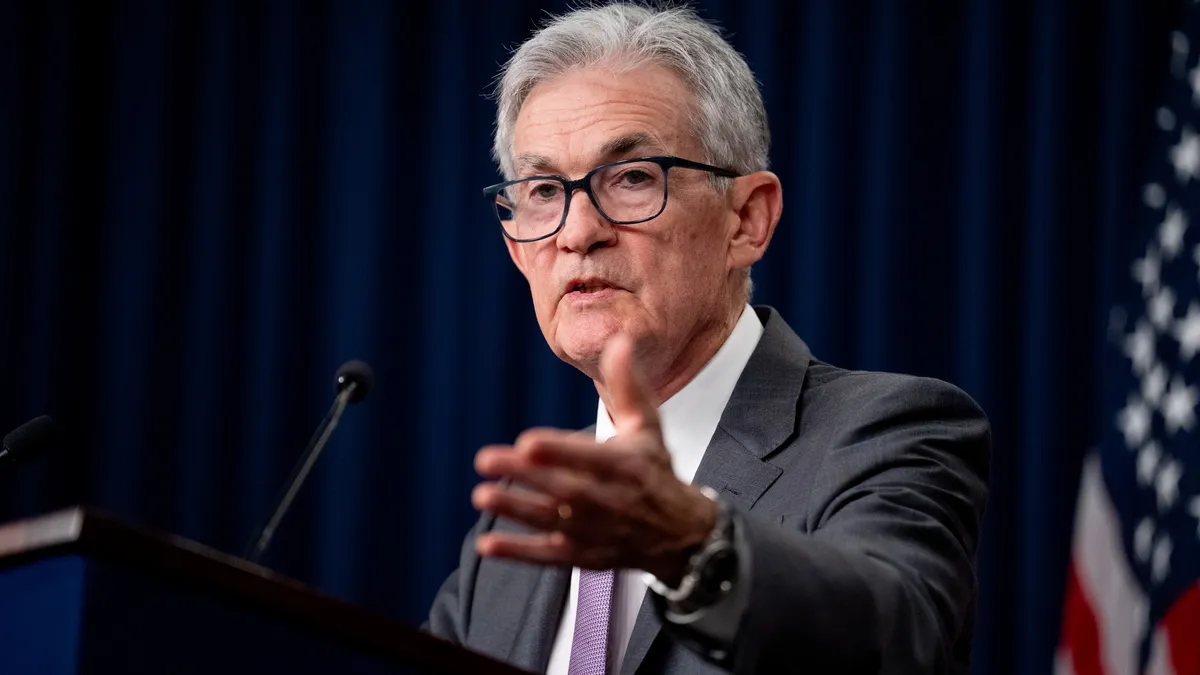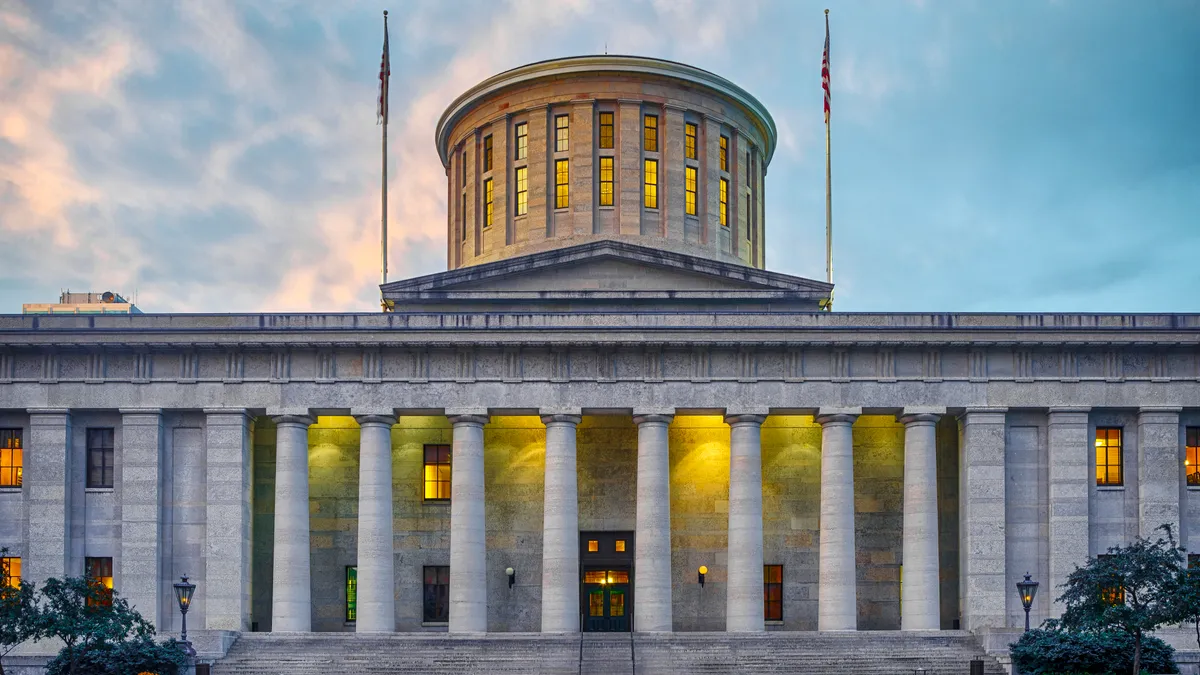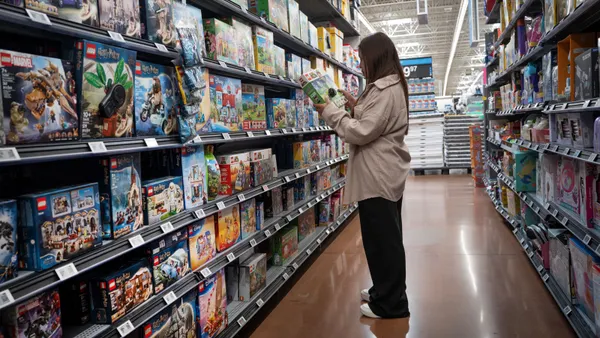Dive Brief:
- Federal Reserve Chair Jerome Powell said Wednesday that tariffs and other policy changes by the Trump administration will probably push up unemployment and spur inflation for the remainder of 2025.
- “Unemployment is likely to go up as the economy slows in all likelihood and inflation is likely to go up as tariffs find their way — and some parts of those tariffs — come to be paid by the public,” Powell said in answer to a question after his Wednesday speech. “That’s the strong likelihood,” he said, “probably for the balance of this year.”
- The inflationary impact from tariffs announced by President Donald Trump may prove to be “persistent,” Powell said in his speech. “Avoiding that outcome will depend on the size of the effects, on how long it takes for them to pass through fully to prices, and, ultimately, on keeping longer-term inflation expectations well anchored.”
Dive Insight:
Powell highlighted how planned and enacted policy shifts, especially tariffs announced this month, have created extraordinary economic uncertainty that has eroded confidence among consumers and businesses, pushed up short-term expectations of inflation and triggered financial market volatility.
“These are very fundamental changes in long-held — in some cases — policies in the United States,” Powell said. He noted that Trump’s tariffs exceed the Smoot-Hawley import duties of 1930 that are blamed for worsening the Great Depression.
“There isn’t a modern experience of how to think about this,” Powell said.
Trump administration officials have begun negotiations with several countries that on April 9 were granted a 90-day reprieve from high reciprocal tariffs, according to the White House. Baseline tariffs of 10% on goods from most U.S. trade partners remain in place, as do 145% duties on imports from China.
Fed policymakers, mandated by Congress to ensure stable prices and full employment, may in coming months find their two goals in conflict, Powell said.
“If that were to occur, we would consider how far the economy is from each goal, and the potentially different time horizons over which those respective gaps would be anticipated to close,” he said.
Economic data suggest that growth slowed during the first quarter from the solid pace of last year, Powell said.
“Surveys of households and businesses report a sharp decline in sentiment and elevated uncertainty about the outlook, largely reflecting trade policy concerns,” he said.
Powell noted that many economists have downgraded their estimates for economic growth, while not predicting recession.
U.S. gross domestic product growth will likely fall to 1% in 2025 from 2.8% last year, United Nations Trade and Development said Wednesday, flagging headwinds from trade wrangles and other global conflicts.
Not all forecasts are as favorable. JPMorgan Chase sees 60% odds of a U.S. recession in 2025.
Even after Trump’s recent 90-day reprieve of many import duties, “what remains is still enough to push the U.S. and China — and thus likely the global economy — into a recession this year,” JPMorgan Chief Global Economist Bruce Kasman said Tuesday in a statement.
Spending by consumers, who fuel about 70% of GDP growth, appears to have increased “modestly” during Q1, Powell said.
Retail sales rose 1.4% in March, the Commerce Department said Wednesday, as consumers aiming to front-run tariffs rushed to buy autos, electronics and other goods. Sales rose among 11 of the 13 categories of goods tracked by the Census Bureau.















